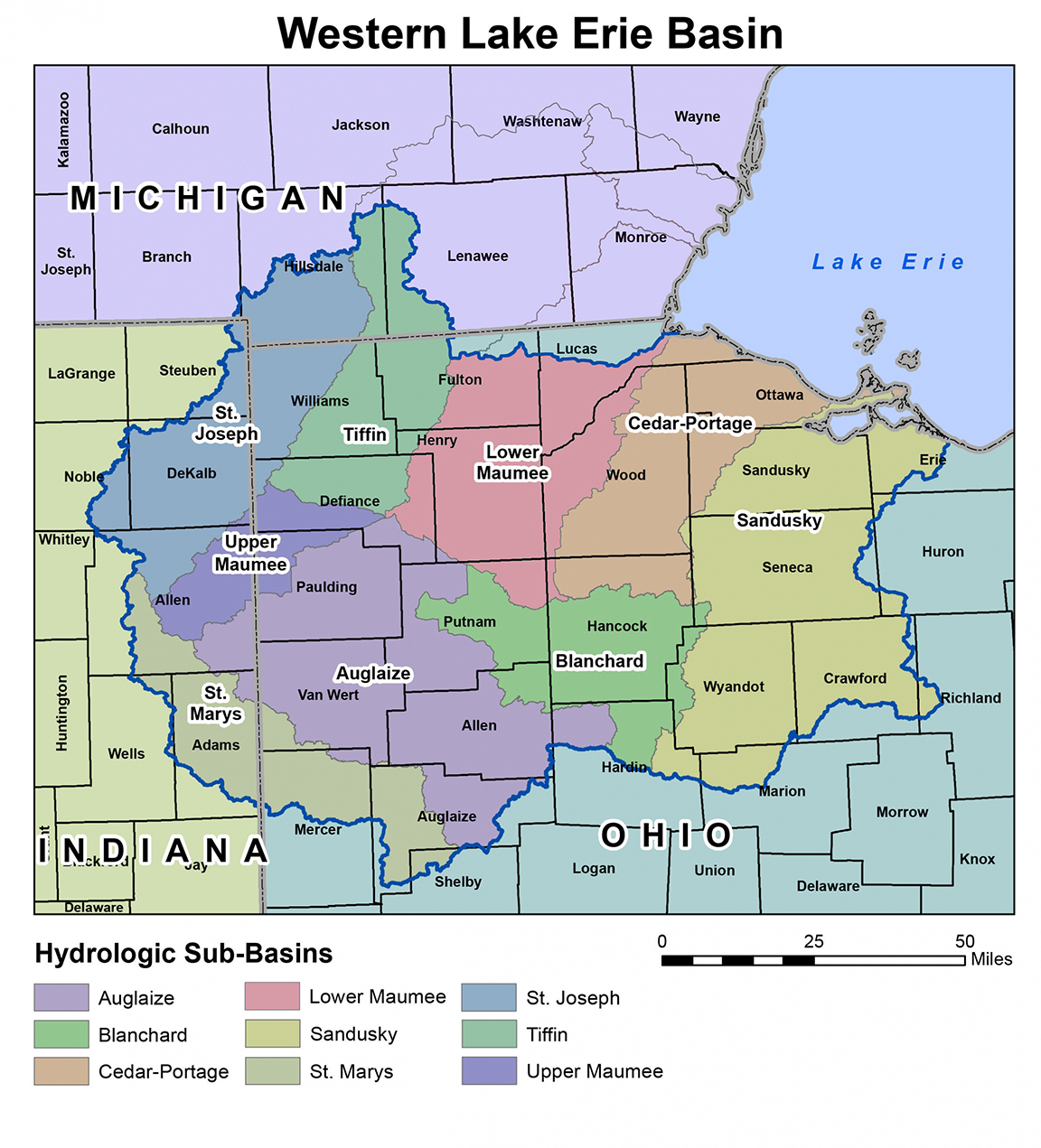Phosphorus Load-Reduction Stimulus Program:
PLUS-UP
Background
The Conservation Technology Information Center (CTIC) is leading a new effort to pilot a phosphorus load reduction market in the Western Lake Erie Basin (Maumee, Sandusky, and Cedar-Portage watersheds, see map). Growers within the indicated watersheds are now being sought to participate in this pilot market. The “Phosphorus Load-Reduction Stimulation Program” (PLUS-UP) payments now being offered to growers are intended to help offset their costs for the use of in-field practices—cover crops and no-till—which yield quantifiable reductions in the amount of dissolved reactive phosphorus (DRP) delivered to the adjacent surface water bodies that drain to Lake Erie. CTIC’s partner in the program, Heidelberg University, is quantifying the reductions for each participating grower using the Nutrient Tracking Tool (NTT) model and reporting this to CTIC. CTIC will provide cash payments to the grower using funds collected from purchasers of these credits. In the pilot program, Bayer CropScience purchased credits at a rate of $100 per pound of DRP. DRP runoff in the basin averages 0.3 pounds per acre; reductions are expected to be in the range of 0.05 to 0.1 pounds per acre. Based on those estimates, payments for practices in the PLUS-UP pilot program will be $5 per acre for cover crops, $3 per acre for no-till, or $10 for both practices employed together.

Explore the Program
Please fill out with your information to be placed on the waiting list for the Plus-Up program, while we are securing additional funding.
